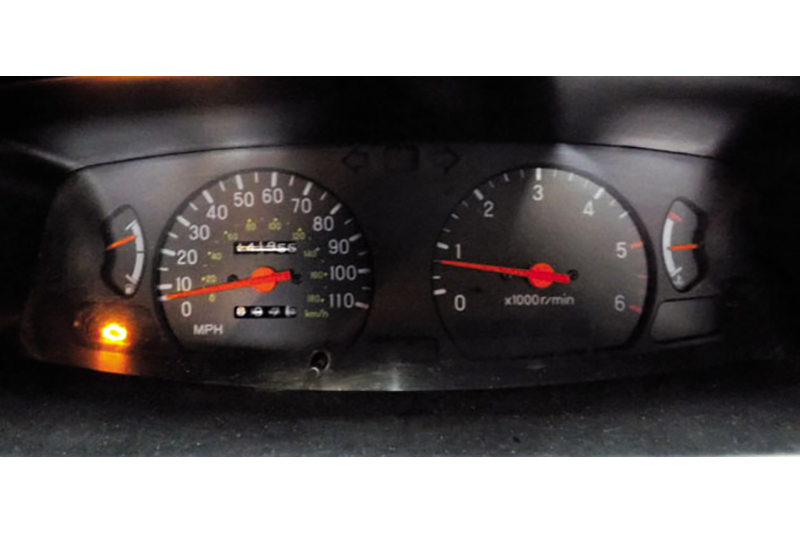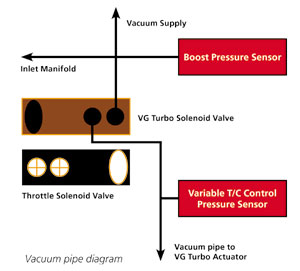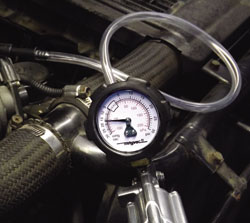
The Mitsubishi L200 pick-up is well known for its ruggedness and load lugging capabilities. The example in question is a 2003 model, which was regularly put to work pulling a mini digger, in addition to other ground work duties. The vehicle had covered over 140,000 miles and was still going strong; until a few months back.
If the vehicle was fully laden and going uphill, the engine management lamp would come on and the pick-up would lose power – a few weeks later it was booked into the workshop. On initial inspection and after a road test it seemed to perform as normal, however, this was in an unladen condition. After finding a suitable hill to replicate the driving conditions, sure enough the engine management lamp came on and the power went flat.

It was time to start the diagnostic process; first I checked if there were any fault codes and code ‘49 Over Boost’ came up.
After a discussion with the owner of the vehicle, I found out that a turbo had been replaced about a year ago after similar drivability issues.
As the fault code told me there was an over boost problem but not much else, it was time for another road test. This time I plugged the vehicle into the G-Scan 2 and set it to record, looking at the following values: Boost Pressure, Engine RPM, Throttle Position and Variable Turbo Charger Control Pressure.

Before the road test the fault code was logged and cleared, then driven to replicate the fault.
When the vehicle was back at the workshop I reviewed the data I’d collected. First looking at the boost pressure reading, I discovered at several points it had exceeded its maximum boost pressure of 200kPa (2.0 bar). This was why the engine management lamp had come on, but what was causing it?
This L200 is a 4X4 114Bhp model which is fitted with a VG (Variable Geometry) turbo. This is controlled by a solenoid valve, which is controlled by the engine ECU, which in turn is provided with feedback from its sensors for load conditions. VG turbochargers have been widely used on diesel engines for a while now, but how do they work and how are they controlled on this particular model of vehicle?
Deflector blades
The VG turbo controls the rate of gas flow through the turbine by adjusting the deflector blades, in order to increase or decrease the exhaust gas pressure on the turbine for the required boost pressure. At lower engine speeds or loads the deflector blades are angled to allow only a narrow passage for exhaust gases to pass through, so that the exhaust back pressure increases. As a result, the gas flow velocity through the turbine increases and is directed to the outer ends of the turbine blades. This generates more leverage, making the turbine spin faster, which in turn gives greater torque at lower speeds.
At higher engine speeds or loads the deflector blades are angled to allow the exhaust gas a larger gap to flow through, resulting in a lower gas flow velocity and slower turbine speed, which delivers lower torque.
The result is the boost pressure is controlled without the need of a waste gate, which means a smaller turbo can be used to eradicate the lag you get from a larger ‘fixed’ turbo.
The deflector blade angle is adjusted by turning an adjuster ring.

This then sets the deflector blades to the desired angle. On this L200 the adjuster ring is operated by an actuator which is controlled by the solenoid valve; this is then controlled by the engine ECU. Thus the turbo pressure can be adjusted to the optimum setting in response to a range of inputs.
On reviewing the road test data, was I dealing with sticking deflector blades on the VG turbo, VG actuator failure, a vacuum system fault, or a sensor fault?
Looking closely at the road test data, the variable turbocharger pressure seemed slow to react, but before I started condemning parts I needed to check the system out and confirm what reading I was getting from serial diagnostics.
First I checked the vacuum lines for splits and perishing, then I looked at the vacuum supply from the pump driven by the alternator – the vacuum produced by the pump at idle was 90kPa.
With a good vacuum supply and pipe work I ruled this out; I then checked the sensors to confirm the measurements I was getting.


I unplugged the vacuum pipe from each sensor and connected a hand vacuum pump – this was to test each sensor and at the same time compare the readings to the ones I was getting from G-Scan 2.


With both the boost pressure and the variable turbo control pressure sensors confirmed to be OK and reading accurately, I checked the operation of the VG actuator. The VG actuator rod moved freely and the diaphragm showed no signs of leaking.
Note: do not apply more than 59kPa of vacuum to the diaphragm, otherwise damage may occur.
Solenoid operation
I then turned my attention to the control solenoid which is found under the intercooler pipe. Once it was removed, I checked its resistance across the two terminals using the multi-meter function on G-Scan 2. The reading was 32 Ohms; this was within the tolerance of (29-35 Ohms at 20˚C).

I then checked the operation of the solenoid.

With the solenoid powered up using a 12V battery and suitable connectors, and a vacuum applied to the lower port, with the upper port sealed, the vacuum should be maintained. However, this solenoid valve was not quite holding its vacuum.
The way this valve works is that a vacuum is supplied to the upper port from the vacuum pump. When the valve is switched on by the engine ECU and controlled by PWM (Pulse Width Modulation), it opens the lower port to operate the VG actuator in order to move the deflector blades according to the engine load. This was not happening fast enough due to a slight internal leak on the valve, which made the turbo produce too much boost at the wrong time, resulting in the fault code ‘49 over boost’ and causing it to go into ‘safe mode’.
After replacing the VG turbo solenoid valve, a road test and recording was required to test if the problem was fixed.

Looking at the data, compared to that of the first recording (towards the top of this page), the variable turbo control pressure is now showing that it is being controlled correctly and the turbo is no longer over boosting.
The vehicle was back performing just as it should.










